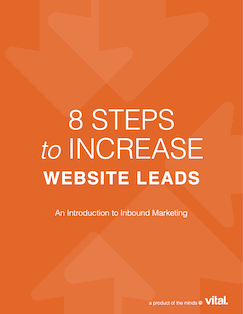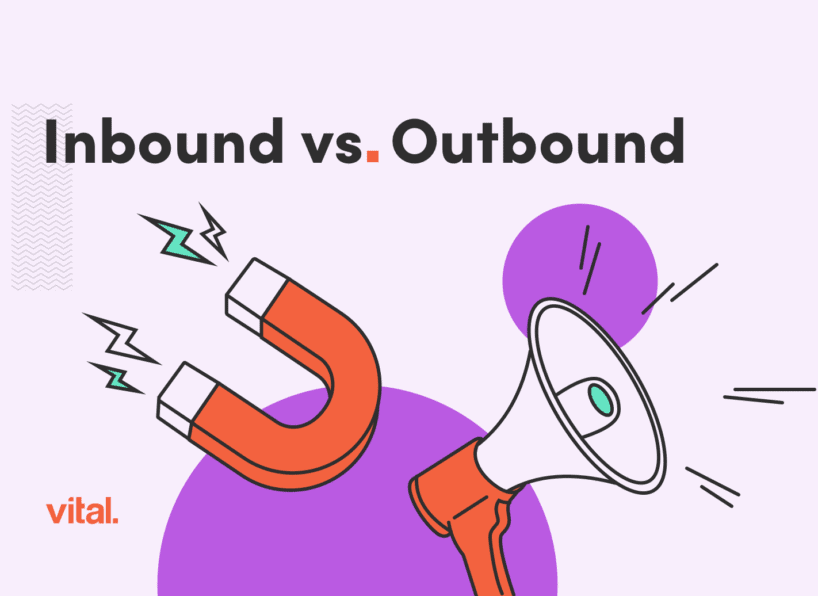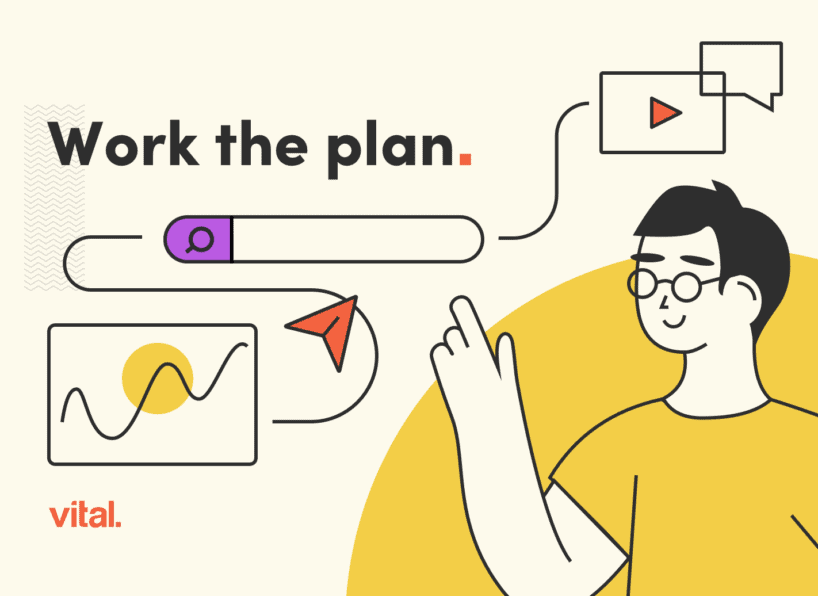There are countless case studies illustrating how an effective inbound marketing strategy can be a business growth game-changer. In my case, it was a straight-up life-changer.
Employing the inbound marketing methodology helped me close the deal on my first-choice job here at Vital after being laid off from a long career in newspapers. Now, one of my first post-journalist assignments is to reveal how I did it.
(Caution: If you are not currently employed, successfully using this approach could result in having to work all day at a fantastic company located just a two-minute walk from your house.)
When I got laid off from the newspaper, I went into reporter mode – researching the local agencies to better understand what they did and how I might contribute value to that world. I also began absorbing industry blogs, learning a new vocabulary.
However, despite drafting custom resumes and strong cover letters for writing, editing and marketing jobs both near and far, my plan to smoothly transition from the newsroom to a communications or creative agency job was, let’s say, pushing deadline.
But I had not yet reached out to my favorite agency. And I had not yet injected inbound marketing strategy into the mix. When I did, the results were almost immediate.
A Call to Action
Around this time, I received an essential piece of advice from former newspaper colleague Chuck McMahon, who had successfully made a similar transition. He counseled me to take the free online video courses offered by HubSpot and get myself certified in the principles of inbound marketing.
It was a personal call to action. The videos were eye-opening. They outlined everything about inbound marketing – breaking it down into lessons and case studies that made perfect sense.
Best of all, they sparked creative inspiration.
While learning how to use Calls to Action (CTAs to us industry pros), Landing Pages and Thank You Pages to generate leads, I experienced some version of that cartoon light bulb that flashes on above the cranium to signify the arrival of a bright idea.
I began to think of prospective employers in terms of their “buyer persona” for the particular product and/or service that I was pitching – me.
I would use my modest web design skills to build on my personal website a custom application package that mirrored the CTA-Landing Page-Thank You Page techniques I had just learned.
The timing was perfect. My favorite agency (I liked how Vital emphasized creative energy, team culture and what I call “yes please” benefits) was suddenly advertising an opportunity. They needed a “Content Writer/Inbound Marketing Bad-Ass.” And I had a solution to their need.
Inbound Marketing Strategy Gets Personal
Rather than a customary cover letter and resume, I sent a short note explaining that I had prepared a special application package using inbound marketing methodology to pitch myself for the job.
My appeal opened with the headline: Seeking a Content Writer/Inbound Marketing Bad-Ass? (I knew that they were.) I merged my actual skills with the profile of a generic ideal candidate and closed with a classic call to action button, confident that my future employers would make that fateful mouse click to my personalized landing page.
This naturally guided them to my thank you page offering a rousing testimonial from my former boss and assuring the reader that I would call within 2-3 business days to follow up and request an in-person interview.
My hope was that this unique effort to market myself would leap off the page, drawing inbound attention to my experience and qualifications in an unusually creative format that would set me apart from fellow contenders for the job.
Bingo! The email seeking to set up an interview came later that day. Time to convert.
With plenty of preparation and a good night’s sleep, the interview went very well. But when I experienced radio silence for approximately seven business days, I launched into serious lead-nurturing mode. I had just acquired a user-friendly WordPress theme and put it into action building a page titled: Top 10 Reasons to Work with John Breneman.
What fun.
(Confession: Finding the right tone for such a piece is challenging. I opted for a not-so-subtle blend of bragging about what a creative bad-ass you are while projecting confident professionalism.)
Not only was the effort instrumental in closing the deal at Vital, the Top 10 page also led to a competing offer with a local startup – confirming my hunch that this new style of job search would yield quantifiable results.
Hire Learning
Looking back on this process – from my awesome new desk (I can work standing or sitting at the push of a button!), head still spinning a bit as I come up to speed – here are some takeaways about what I learned:
1. Go the Extra URL
If your skill set (or a friend’s) includes a bit of web design, put together a self-promotional page custom built for the job(s) you’re targeting. Most people will not be doing this. A smart, strategic blog post can also help you stand out.
I began by crafting a visually appealing “narrative resume,” telling the story of my career in a conversational style and offering links to selected writing samples. This led to the aforementioned inbound-style application and Top 10 page that helped me land the dream job.
2. Enroll in the University of You
As an aspiring marketer, I knew I had an immense amount to learn. I didn’t actually create my own university and design an informal academic curriculum with a major in Marketing and a minor in Freelance Copywriting. But I did study hard, absorbing every useful piece of information I could find about my new field and the companies I would be targeting.
Ask yourself: What new skills and information will I need? In my case, taking the HubSpot certification course was essential. I also utilized video tutorials to learn how to operate my new Divi theme for WordPress. I launched an ongoing Twitter experiment to gather data and insight about how people use social media for marketing (boosting my presence from 180 followers to roughly 10,000 by using ignitwit.com, a free service that provides suggestions on who to follow based on five keywords you’ve selected). And much more.
3. Job Search vs. Marketing Yourself
This process has convinced me: There is a big difference between simply conducting a job search and actually marketing yourself to prospective employers. This means doing your homework on who and what they are looking for, and creating a compelling profile that mirrors those needs.
Since I was targeting creative agencies my approach needed to be, duh, creative. No matter how much I polished the words, my boring old black-and-white resume was not going to cut it.
The splashy job application methodology I used to get hired at Vital might get you tossed in the “reject” pile at, say, a stodgy financial institution. But here, I have it on good authority that it helped me stand out among my competitors.
I did not conduct an exhaustive keyword analysis, but I knew the company valued such concepts as “creative,” “high-energy,” “wired,” even “weird.” So I sought to incorporate those qualities in my effort to make a positive connection.
For some, it can be challenging to let your ego breathe a bit as you strive to write copy that accurately tells your story but adds a wow factor. All I can say is, supercharging my search got me a great job in an exciting field where I am my own best testimonial to the transformative impact of inbound marketing strategy.





